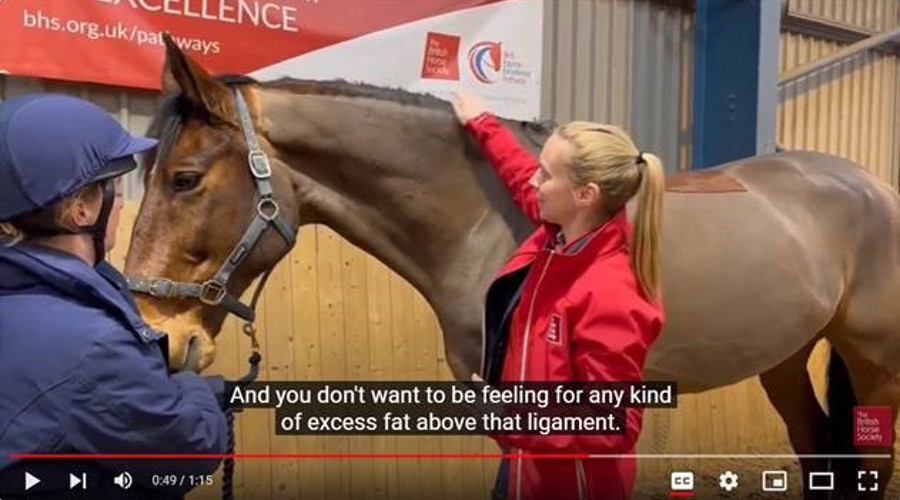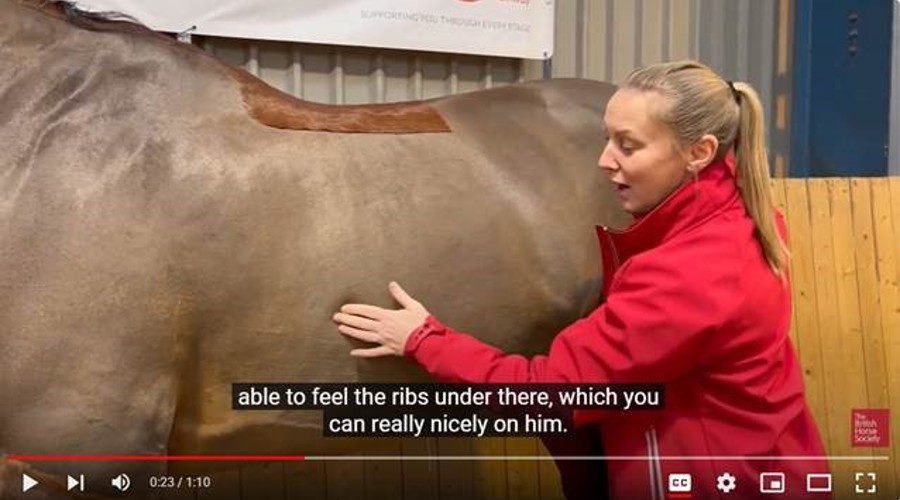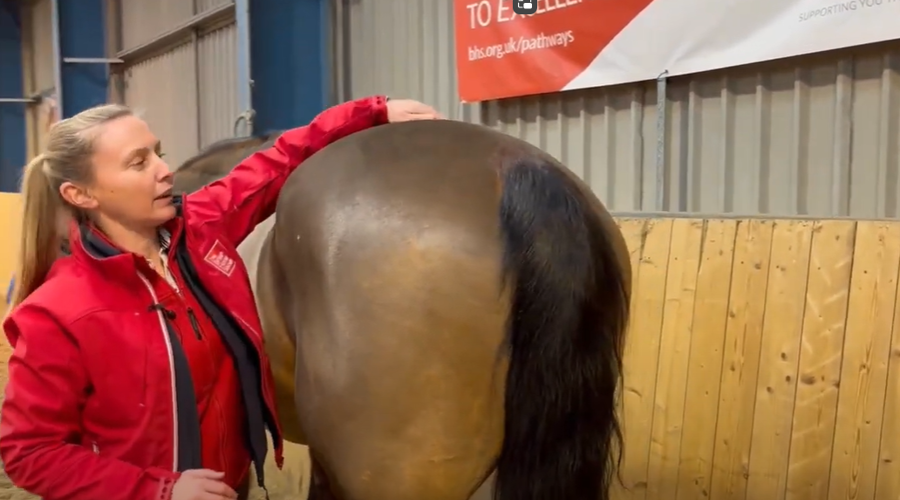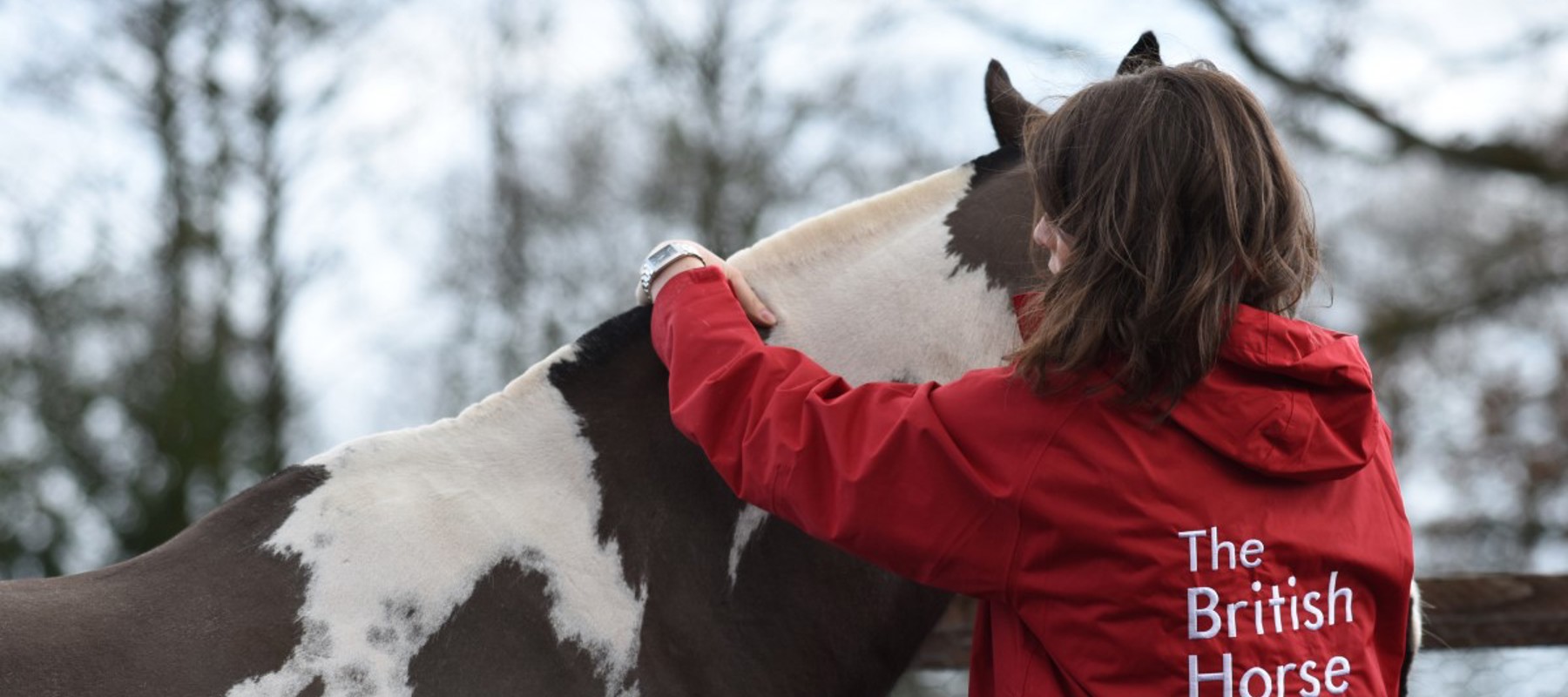Fat scoring (also known as body condition scoring) can be used to assess your horse’s overall fat covering to determine whether they’re a healthy weight. Fat will feel spongy whereas muscle is firmer. However, dangerous crest fat can start to feel hard and become difficult to move from side to side.
A healthy fat score for each area should be between 2.5 – 3 out of 5. By giving each area its own individual score, it makes it easier to monitor and track any changes. Ideally fat scoring should be completed every two weeks to ensure action can be taken before any large changes occur.
You will need to use a different fat scoring system to assess the weight of your donkey. You can find the Donkey Body Condition Score Chart on the Donkey Sanctuary’s website.
Step One - Neck and shoulders
Look at whether you can see the shape of the neck muscles. Feel along the crest and notice if there is thickened, hard fat and if you can wobble it from side to side. You should be able to feel the horse’s nuchal ligament which runs along the length of the horse’s neck, which is located up near the top of the mane. The ligament is an elastic structure that feels tubular. Take care when feeling for the nuchal ligament with horses that are carrying excess fat on their neck as the area will feel inflamed when pressure is added. Muscle is below the nuchal ligament, any excess fat will sit above, so be careful not to confuse this as being a topline. Stallions will naturally develop a crest on their neck.
Run your hand down the neck onto the shoulder. Fat can accumulate in front of their shoulder blades, which will tend to cause your hand to move smoothly over the neck onto the shoulder, instead of your hand being stopped by the shoulder blade. Ideally, the shoulder blade should be clearly defined. You may also feel fat pads behind the shoulder blades too.
 play-circle
play-circle
Watch
Step Two - Middle
Run your hand over the ribs; ideally you should be able to feel them fairly easily with light pressure. If you have to press firmly or can’t feel them at all then your horse is carrying excess fat.
Placing your hand approximately a hand’s width away from the withers, follow the shape across the horse’s back. Ideally your hand should follow the arch over the spine and be able to feel the backbone. When you lift your hand up, away from the back, it should have a nice curve. Fat can build up on either side of the spine until it reaches a point of being higher than the spine and creating a gutter; this will often result in your hand lying flat across their back. If your horse’s spine is very visible and very easy to feel, this indicates a lack of fat covering this area and your hand would have a more angular shape.
 play-circle
play-circle
Watch
Step Three - Hindquarters
Run your hand over their hip bones, top of the pelvis and tail head - you should be able to see and feel them easily under a thin layer of fat. If you have to press firmly or can’t feel them at all then your horse is carrying excess fat. If the hip bones are prominently ‘sticking out’, the top of the pelvis is prominent and both are very easy to feel, the horse is underweight.
Safely look at your horse from behind; ideally their hindquarters should be slightly rounded – like the letter C. An ‘apple’ shape and a gutter along the backbone would indicate too much fat. If the quarters drop away and become very angular, this indicates that the horse is underweight.
 play-circle
play-circle
Watch
 play-circle
play-circle
Watch


